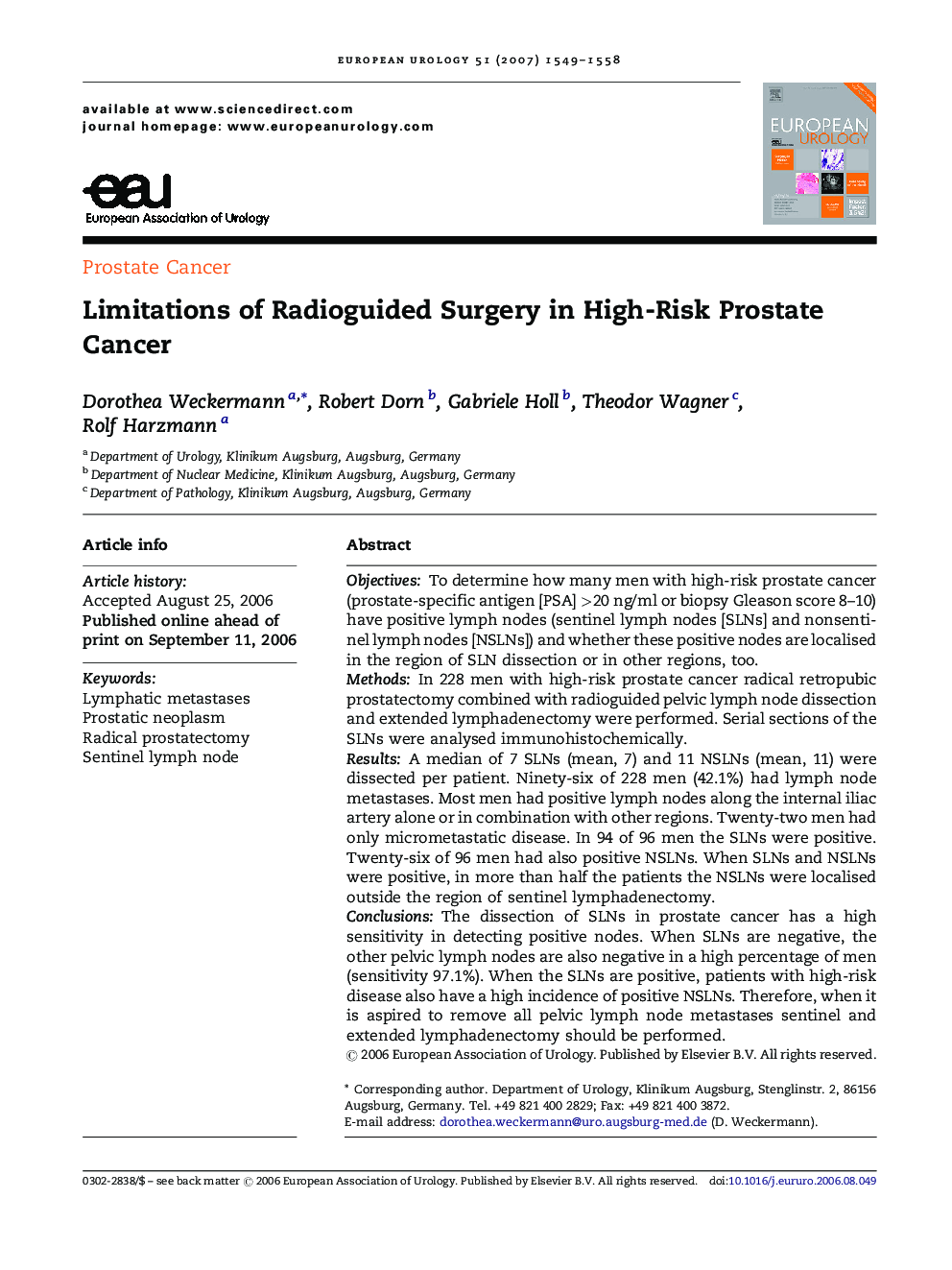| Article ID | Journal | Published Year | Pages | File Type |
|---|---|---|---|---|
| 3928487 | European Urology | 2007 | 10 Pages |
ObjectivesTo determine how many men with high-risk prostate cancer (prostate-specific antigen [PSA] >20 ng/ml or biopsy Gleason score 8–10) have positive lymph nodes (sentinel lymph nodes [SLNs] and nonsentinel lymph nodes [NSLNs]) and whether these positive nodes are localised in the region of SLN dissection or in other regions, too.MethodsIn 228 men with high-risk prostate cancer radical retropubic prostatectomy combined with radioguided pelvic lymph node dissection and extended lymphadenectomy were performed. Serial sections of the SLNs were analysed immunohistochemically.ResultsA median of 7 SLNs (mean, 7) and 11 NSLNs (mean, 11) were dissected per patient. Ninety-six of 228 men (42.1%) had lymph node metastases. Most men had positive lymph nodes along the internal iliac artery alone or in combination with other regions. Twenty-two men had only micrometastatic disease. In 94 of 96 men the SLNs were positive. Twenty-six of 96 men had also positive NSLNs. When SLNs and NSLNs were positive, in more than half the patients the NSLNs were localised outside the region of sentinel lymphadenectomy.ConclusionsThe dissection of SLNs in prostate cancer has a high sensitivity in detecting positive nodes. When SLNs are negative, the other pelvic lymph nodes are also negative in a high percentage of men (sensitivity 97.1%). When the SLNs are positive, patients with high-risk disease also have a high incidence of positive NSLNs. Therefore, when it is aspired to remove all pelvic lymph node metastases sentinel and extended lymphadenectomy should be performed.
